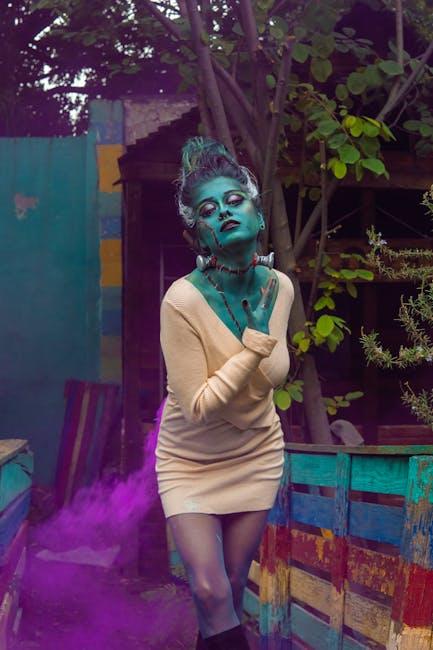The horror genre has long captivated audiences with its ability to evoke fear and suspense, drawing viewers into narratives that explore the darkest corners of human experience. However, a growing discourse questions whether this genre is merely exploiting trauma for entertainment. As filmmakers and writers push boundaries to create more intense and visceral experiences, concerns arise about the ethical implications of depicting traumatic events and psychological distress. This article seeks to analyze the intersection of horror and trauma, examining how these narratives reflect societal anxieties and whether they offer meaningful commentary or simply capitalize on shock value. By exploring the motivations behind horror storytelling and the impact on audiences, we aim to unravel whether the genre serves as a conduit for confronting fears or if it crosses a line into exploitation.
Understanding Trauma in Horror: A Complex Relationship
In the intricate landscape of horror, the portrayal of trauma often walks a fine line between representation and exploitation. Horror narratives frequently delve into the depths of human fear and suffering, leveraging trauma as a catalyst for both character development and plot progression. This relationship is complex, as it can offer profound insights into the human condition while simultaneously risking the trivialization of real-world experiences. The genre’s ability to evoke visceral reactions is rooted in its exploration of our deepest anxieties, yet this very strength raises ethical questions about whether trauma is being utilized respectfully or merely as a tool for entertainment.
- Representation vs. Exploitation: While some horror films and stories aim to provide a thoughtful exploration of trauma, others may inadvertently reduce it to a mere plot device, stripping away the nuances of real-life experiences.
- Audience Impact: For some viewers, the depiction of trauma can offer a cathartic release or a deeper understanding of their own fears. However, for others, it can be triggering or reinforce harmful stereotypes.
- Creative Responsibility: Content creators within the horror genre are tasked with balancing the artistic freedom to explore dark themes with the responsibility of handling sensitive topics with care and respect.

Analyzing Audience Impact: Emotional Resonance or Exploitation
When examining the intersection of audience impact and the horror genre, it’s crucial to discern whether filmmakers are fostering emotional resonance or veering into the realm of exploitation. Horror movies often delve into the darkest facets of human experience, tapping into fears that are both universal and deeply personal. This ability to connect on an emotional level can be cathartic, offering viewers a space to confront and process their own anxieties in a controlled environment. However, the line between genuine emotional engagement and the commodification of trauma can sometimes blur, raising ethical questions about the intent and impact of such narratives.
To better understand this dichotomy, consider the following aspects:
- Intent of Storytelling: Does the narrative aim to provoke thought and empathy, or is it merely seeking to shock and exploit?
- Character Development: Are the characters treated with depth and complexity, or are they reduced to mere vehicles for horror?
- Audience Reaction: Does the film encourage reflection and discussion, or does it leave viewers feeling manipulated and disturbed without purpose?
These factors can help distinguish whether a horror film is engaging with its audience on a meaningful level or simply leveraging trauma for sensationalism.

The Role of Filmmakers: Balancing Artistic Vision with Ethical Considerations
In the intricate dance between artistic expression and ethical responsibility, filmmakers in the horror genre often find themselves navigating a precarious path. On one hand, artistic vision drives them to explore the depths of human fear, using innovative storytelling techniques and shocking imagery to evoke intense emotional responses. This pursuit of authenticity and originality can lead to groundbreaking films that push the boundaries of the genre. However, the question arises: at what point does this creative endeavor cross the line into exploitation?
Balancing this artistic ambition with ethical considerations involves a careful assessment of the themes and narratives being portrayed. Filmmakers must consider:
- The potential impact on audiences who may have experienced similar traumas.
- Whether the depiction of trauma serves a narrative purpose or simply shocks for shock’s sake.
- The responsibility of representing sensitive topics with nuance and respect.
By weighing these factors, filmmakers can strive to create horror films that are not only terrifying but also thoughtful, offering viewers a space to confront fears without feeling manipulated or retraumatized.
Recommendations for Responsible Storytelling in the Horror Genre
To ensure that horror narratives are crafted with sensitivity and respect, storytellers should focus on creating a balance between evoking fear and maintaining ethical storytelling practices. Understanding the impact of trauma is crucial, as horror should not trivialize or exploit real-life experiences. Writers and creators can take the following approaches:
- Research and Representation: Engage with subject matter experts and those with lived experiences to portray trauma accurately. This helps in creating authentic and respectful narratives.
- Contextual Sensitivity: Ensure that depictions of trauma serve the narrative purpose and contribute to character development rather than being gratuitous or sensationalized.
- Content Warnings: Provide appropriate warnings for potentially triggering content, allowing audiences to make informed decisions about their consumption.
By adopting these strategies, creators can contribute to a horror genre that is both thrilling and conscientious, offering audiences a space for reflection and understanding alongside their scares.







































